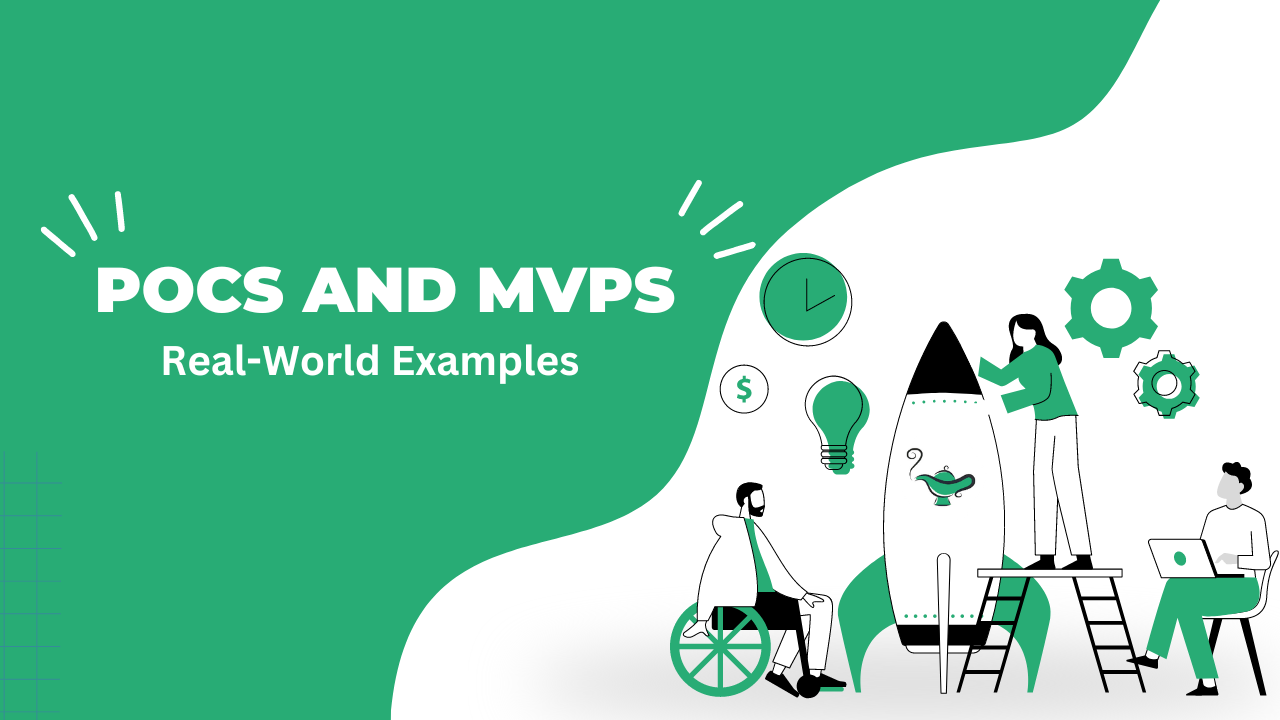Let's clarify the concepts of Proof of Concept (POC) and Minimum Viable Product (MVP) with real-world examples and step-by-step explanations:
Proof of Concept (POC)
Purpose: To test the feasibility of a specific technology or concept before investing significant time and resources in development.
Focus: Technical viability and functionality.
Scope: Limited, focusing on core features or functionalities.
Audience: Internal team, stakeholders, or potential investors.
Example: EdTech Startup with AI-powered Personalized Learning
- Gather a small dataset of student learning data.
- Develop a basic AI model that analyzes the data and suggests personalized learning activities.
- Test the model with a limited group of students to assess its accuracy and effectiveness.
- Analyze the results and determine if the concept is feasible for further development.
Minimum Viable Product (MVP)
Purpose: To launch a basic version of a product with core features to gather user feedback and validate market demand.
Focus: User experience, core functionalities, and market validation.
Scope: Minimum set of features needed to provide value to early adopters and gather feedback.
Audience: Early adopters, target customers.
Example: Food Delivery App for Busy Professionals
- Identify core features: restaurant listings, menu browsing, online ordering, payment processing, delivery tracking.
- Develop a simple and user-friendly app interface.
- Partner with a limited number of restaurants in a specific area.
- Launch the app to a targeted group of users (e.g., professionals working in nearby office buildings).
- Gather user feedback on the app's functionality, usability, and overall experience.
- Analyze feedback and iterate on the app based on user needs and market response.
Key Differences between POC and MVP
| Feature | Proof of Concept (POC) | Minimum Viable Product (MVP) |
|---|---|---|
| Purpose | Test technical feasibility | Validate market demand and gather user feedback |
| Focus | Technical functionality | User experience and core functionalities |
| Scope | Limited, core features | Minimum set of features for a usable product |
| Audience | Internal team, stakeholders, investors | Early adopters, target customers |
| Development | Rapid prototyping, experimentation | Basic version of the product with potential for future iterations |
Keys to Successful POCs and MVPs: A Step-by-Step Guide
- Clearly Define Your Goals and Objectives:
- POC: Determine the specific technology or concept you want to validate and the criteria for success.
- MVP: Identify the core problem you're solving, your target audience, and the key features that provide value to users.
- Start Small and Focused:
- POC: Limit the scope to essential components to test the feasibility of the concept without extensive development.
- MVP: Prioritize the minimum set of features needed to deliver a functional product that addresses the core user need.
- Gather and Analyze Data:
- POC: Collect data from your testing to assess the technical performance and viability of the concept.
- MVP: Gather user feedback through surveys, interviews, and usage data to understand user experience, identify pain points, and validate market demand.
- Iterate and Adapt:
- POC: Based on your findings, refine the concept or pivot to a different approach if necessary.
- MVP: Continuously improve the product based on user feedback and market response. Add new features, fix bugs, and enhance the user experience through iterative development cycles.
- Communicate Effectively:
- POC: Clearly communicate the results of your testing to stakeholders and decision-makers.
- MVP: Engage with your users, keep them informed about updates, and demonstrate responsiveness to their feedback.
Additional Keys to Success:
- Team Collaboration: Involve your team in the process, leveraging their expertise and diverse perspectives.
- Rapid Prototyping: Utilize rapid prototyping tools and techniques to quickly build and test your POC or MVP.
- User-Centric Design: Focus on creating a user-friendly and intuitive experience for your MVP.
- Metrics and Measurement: Define relevant metrics to track progress, measure success, and inform decision-making.
- Time Management: Set realistic timelines for development and iteration to avoid delays and maintain momentum.
